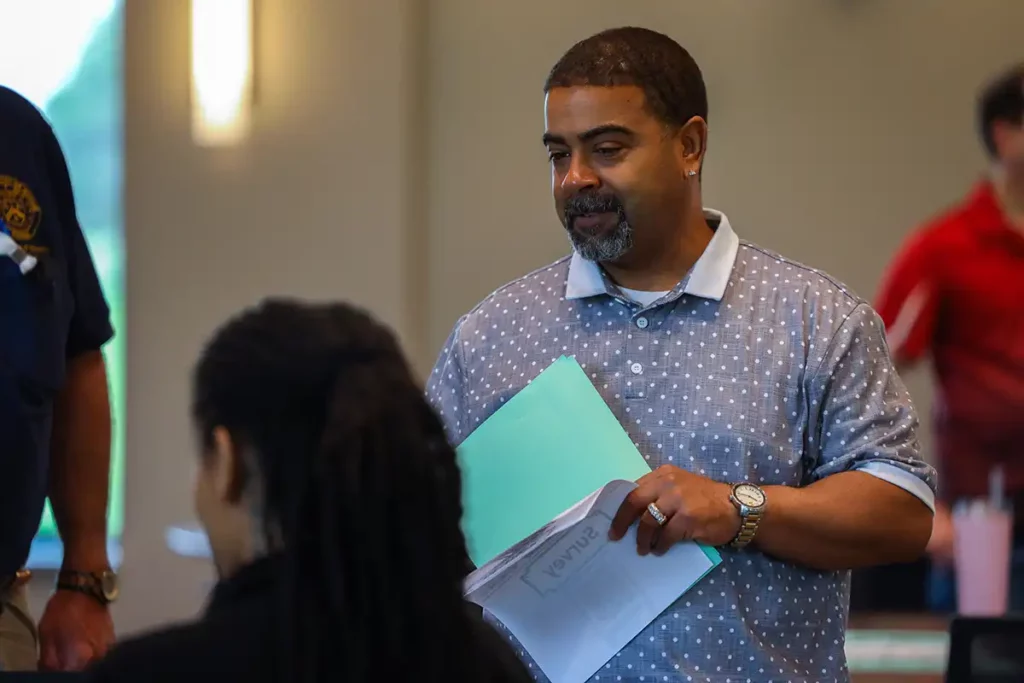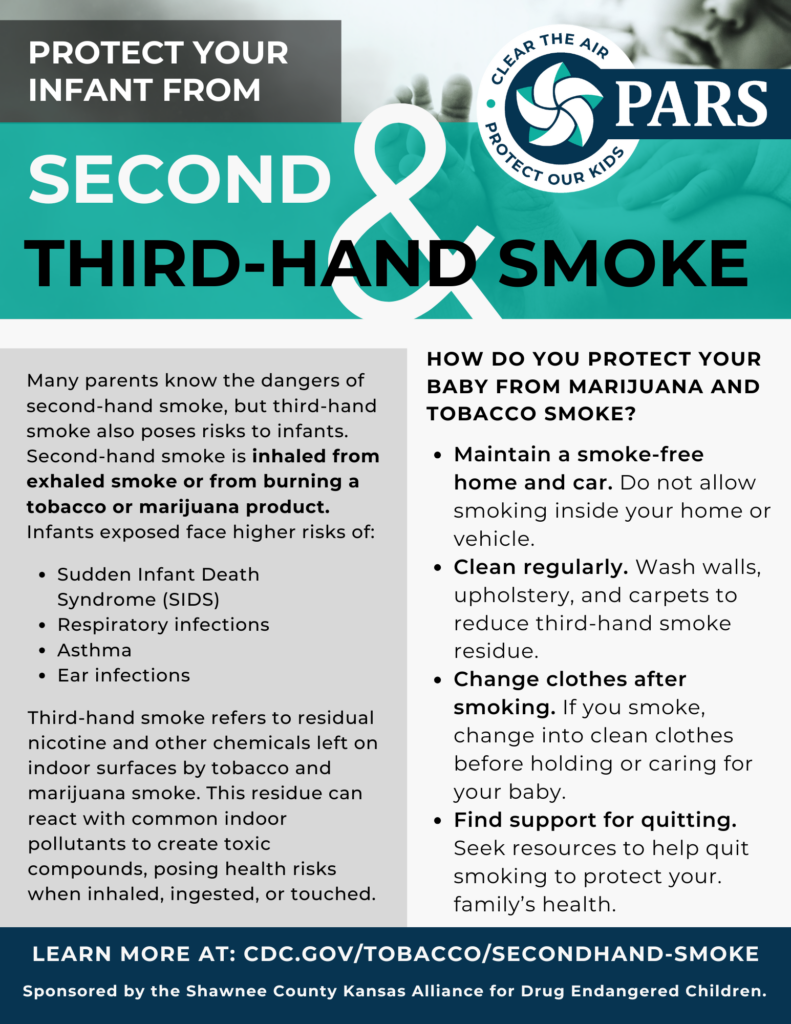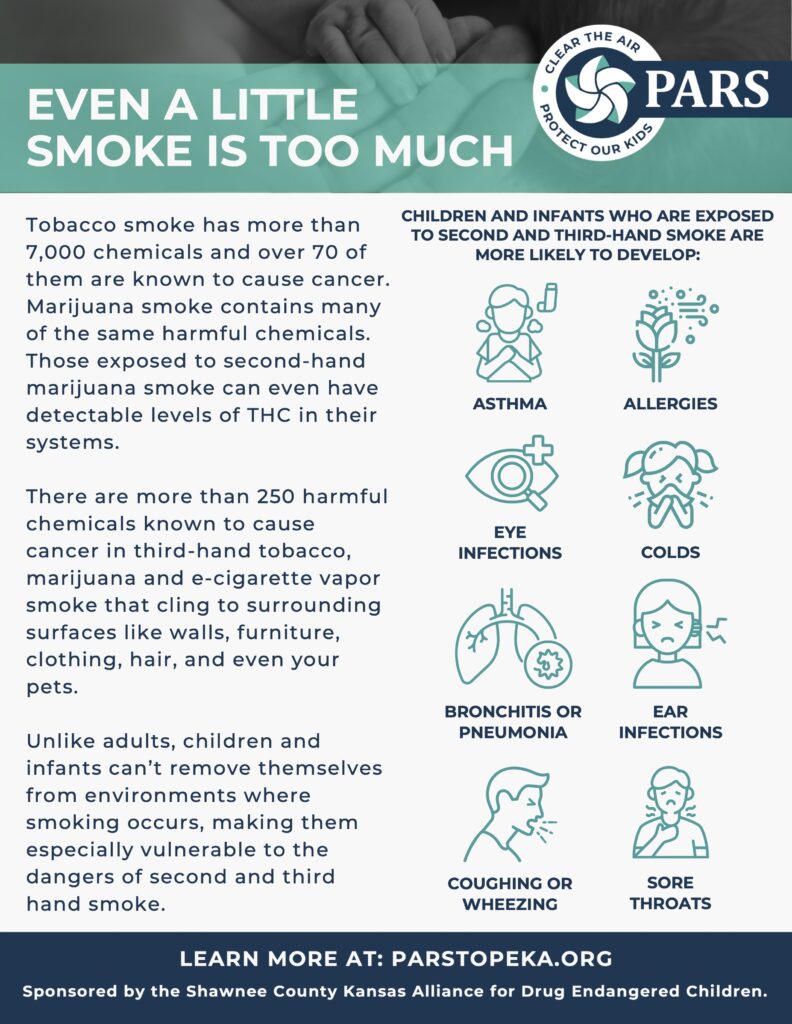Prevention
Education
info@parstopeka.org

Second and Third Hand Smoke
Clear the Air – Protect Your Kids
PARS is passionate about prevention on many levels. This starts early by protecting our kids at young ages from second and third hand smoke. Download our Second & Third-Hand Smoke PDF or see some of the national resources below for more information!
CDC
Health Problems Caused by Second Hand Smoke
Johns Hopkins Medicine The Impact of Third Hand Smoke on Kids
Even a Little Smoke is Too Much
Clear the Air – Protect Your Kids
Download our Even a Little Smoke is Too Much PDF or see some of the national resources below for more information!
Raise Smoke Free Kids
Marijuana Smoke
Cancer Research UK
What’s In a Cigarette
KDHE
Secondhand and Thirdhand Smoke
Cornell
Kansas Regulations
Substance Misuse and Abuse Prevention Program
The substance misuse and abuse prevention program at PARS is designed to bring awareness to youth, families, and other community members in the Topeka area using a diverse set of strategies focused on awareness, education, and prevention. Evidence-based approaches have shown that by improving protective factors* and limiting risk factors*, the behaviors associated with addiction can be mitigated, and the potential for life-long, life-altering habits can be reduced.
We utilize Kansas Communities that Care (KCTC) survey data to help guide our efforts. The survey is given annually to 6th, 8th, 10th, and 12th-grade students. It is based on more than 40 years of research identifying increases or decreases in risk and protective factors. Utilizing this data helps PARS to focus on the specific needs of a particular school district as reported by their students.
Our prevention education program with youth is taught primarily within school classrooms through a partnership with our local school districts. While our education is based on science, it’s also interactive and geared toward youth to be factual, relevant information that they can connect with.
*See FAQs for more information on protective Factors and Risk Factors.


Substance Misuse and Abuse Prevention Program
What is the Substance Misuse Task Force?
The Substance Misuse Task Force is comprised of community members who work together to develop initiatives to educate and inform the community of the impacts of substance use on teens as well as adults. The task force also works on helping get resources to the areas in the community that are affected most by substance use.
When does the task force meet?
The task force meets once a quarter at Prevention and Resiliency Services at 2209 SW 29th Street. See our events calendar for dates.
Who can be a member of the task force?
Anyone who has a passion for educating the general public on substance misuse and/or helping others who are currently struggling with substance misuse. You do not have to have knowledge about addiction, you just have to have a heart for people.
Live Well Shawnee County
More Information Coming Soon!

Prevention Education FAQ’s
- Prevention Education
- FAQ's
Risk factors are characteristics at the biological, psychological, family, community, or cultural level that precede and are associated with a higher likelihood of negative outcomes.
An individual's risk factors might include a genetic predisposition to addiction or exposure to alcohol or substances prenatally.
Protective factors are characteristics associated with a lower likelihood of negative outcomes or that reduce a risk factor's impact. Protective factors may be seen as positive countering events.
An individual's protective factors might include a positive self-image, self-control, or social competence.



